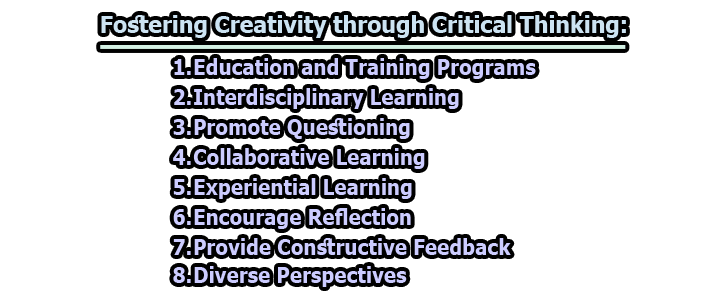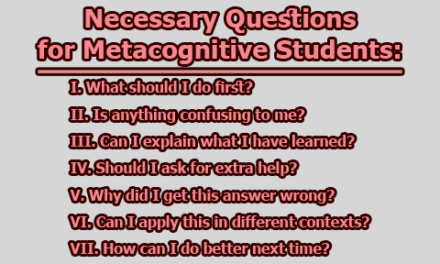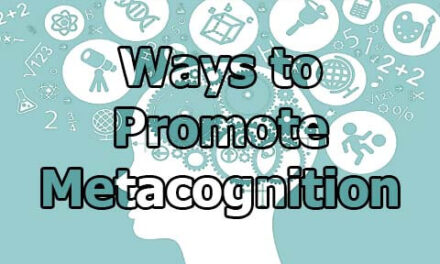Fostering Creativity through Critical Thinking:
Creativity and critical thinking are two essential cognitive skills that have long been recognized as valuable assets in the development of well-rounded individuals and successful professionals. However, these two concepts are often seen as distinct, if not contradictory. Creativity is often associated with imagination, free-flowing ideas, and breaking boundaries, while critical thinking is linked to analysis, evaluation, and problem-solving. In reality, though, creativity and critical thinking are not opposing forces; rather, they complement and enrich each other in a symbiotic relationship. In this article, we will explore the connection between creativity and critical thinking, dissect their individual attributes, and discuss how fostering creativity through critical thinking.
The Foundations of Creativity:
Before we explore the relationship between creativity and critical thinking, it’s important to define each concept individually. Creativity is the ability to generate original ideas, solutions, or expressions that are novel and valuable. It encompasses a wide range of domains, from art and literature to scientific innovation and entrepreneurship. Creativity is not limited to a specific group of individuals but is a capacity that exists within every human being, waiting to be tapped into and developed. Several factors contribute to the development of creativity:
- Knowledge Base: Creativity is built upon a foundation of knowledge and expertise in a particular field. The more you know, the more you can draw from when generating creative ideas.
- Open-mindedness: Being open to new experiences, perspectives, and ideas is crucial for creativity. An open mind allows you to connect seemingly unrelated concepts and discover novel solutions.
- Curiosity: A natural curiosity about the world and a desire to explore and learn are essential drivers of creativity. Curiosity leads to questions, and questions are the birthplace of new ideas.
- Divergent Thinking: Creativity often involves divergent thinking, which is the ability to generate multiple solutions or ideas in response to a single problem or question. This requires breaking away from conventional thinking patterns.
- Risk-Taking: Creativity often involves taking risks, as it requires departing from the familiar and venturing into the unknown. A willingness to embrace uncertainty is a hallmark of creative individuals.
The Essence of Critical Thinking:
Critical thinking, on the other hand, is the ability to analyze, evaluate, and synthesize information to make reasoned judgments and decisions. It involves examining arguments, detecting biases, and distinguishing between facts and opinions. Critical thinking is essential for problem-solving and making informed choices in both personal and professional life. Key components of critical thinking include:
- Analysis: Critical thinkers break down complex issues into their constituent parts and examine them systematically. They identify patterns, relationships, and causes.
- Evaluation: Critical thinkers assess the quality and validity of information, arguments, or solutions. They weigh evidence, consider counterarguments, and make informed judgments.
- Inference: Critical thinkers draw logical conclusions from available information. They connect the dots and make educated guesses based on evidence.
- Problem-Solving: Critical thinking is closely linked to problem-solving. It involves identifying problems, defining them clearly, and generating potential solutions.
- Reflection: Critical thinkers engage in self-reflection, continuously examining their own thought processes and biases. They are open to revising their beliefs and opinions in light of new evidence.
The Symbiotic Relationship:
At first glance, creativity and critical thinking may seem like opposing forces, but they are more intertwined than one might think. Creativity often starts with an idea, a vision, or a problem to be solved, and this is where critical thinking comes into play. Let’s explore how these two faculties interact and enhance each other:
- Critical Thinking Fosters Idea Evaluation: While creativity generates a multitude of ideas, critical thinking helps sift through them. Critical thinking enables individuals to evaluate the feasibility, relevance, and potential of creative ideas. It helps filter out impractical or unworkable concepts, leaving behind those with true potential.
- Creativity Sparks Critical Thinking: Creative ideas often challenge existing norms and require critical examination. When presented with an innovative concept, critical thinking is essential to assess its merits, consider potential drawbacks, and determine its impact.
- Problem-Solving and Creativity: Problem-solving is a critical thinking skill, but it is closely linked to creativity. Creative problem-solving involves generating innovative solutions to complex issues. Critical thinking guides the process by helping individuals analyze the problem and evaluate potential solutions.
- Divergent and Convergent Thinking: Creativity relies on divergent thinking to generate a wide range of ideas, while critical thinking employs convergent thinking to narrow down and select the best options. This balance of divergent and convergent thinking is essential for effective decision-making and innovation.
- Communication and Persuasion: Both creativity and critical thinking are crucial in communication and persuasion. Creative communication strategies capture attention and engage the audience, while critical thinking ensures that the message is well-structured, logical, and backed by evidence.
- Adaptation and Innovation: In a rapidly changing world, adaptability and innovation are highly valued. Creativity provides the spark of innovation, while critical thinking helps refine and adapt creative ideas to fit evolving circumstances.
Fostering Creativity through Critical Thinking:
Now that we understand the symbiotic relationship between creativity and critical thinking, let’s explore practical strategies for fostering creativity through the development of critical thinking skills:
1. Education and Training Programs: Educational institutions can play a significant role in nurturing both creativity and critical thinking. Curriculum design should incorporate opportunities for students to engage in open-ended, exploratory projects that require creative problem-solving. Encouraging debate, discussion, and critical analysis of various topics can further develop critical thinking.
2. Interdisciplinary Learning: Encouraging students to explore subjects outside their primary area of study can stimulate creativity and critical thinking. Interdisciplinary learning allows for the cross-pollination of ideas and perspectives, leading to novel insights and solutions.
3. Promote Questioning: Encourage a culture of inquiry where asking questions is celebrated. Both creativity and critical thinking begin with asking “Why?” or “What if?” Encourage students to ask questions that challenge the status quo and explore unconventional ideas.
4. Collaborative Learning: Collaboration among students with diverse backgrounds and perspectives can lead to richer discussions and more creative problem-solving. Collaborative projects often require critical evaluation of different ideas before reaching a consensus.
5. Experiential Learning: Hands-on, real-world experiences provide opportunities for students to apply critical thinking skills in practical situations. This can include internships, research projects, or community service.
6. Encourage Reflection: Incorporate reflection into the learning process. After completing a project or assignment, encourage students to reflect on what worked, what didn’t, and how they can improve. This self-assessment promotes critical thinking.
7. Provide Constructive Feedback: Constructive feedback is essential for growth. Teachers and mentors should provide feedback that encourages students to think critically about their work and consider alternative approaches.
8. Diverse Perspectives: Expose students to a wide range of perspectives and viewpoints. This helps them develop empathy, appreciate different cultures, and think critically about complex societal issues.
The Role of Critical Thinking in the Workplace:
Creativity and critical thinking are not limited to the classroom; they are equally crucial in the workplace. In fact, many employers value these skills highly and actively seek individuals who can bring innovative solutions to the table. Here’s how fostering critical thinking can enhance creativity in professional settings:
- Problem-Solving: In a professional context, critical thinking is indispensable for problem-solving. It helps employees analyze issues, identify root causes, and generate creative solutions to challenges.
- Innovation: Critical thinking encourages employees to question existing processes and systems. When coupled with creativity, it leads to innovation, whether in product development, marketing strategies, or business operations.
- Decision-Making: Effective decision-making requires weighing options, considering risks, and anticipating outcomes. Critical thinking enables employees to make well-informed decisions, while creativity helps in generating alternative solutions.
- Teamwork: Creative teams are often composed of individuals with diverse backgrounds and perspectives. Critical thinking is essential for managing and harnessing this diversity, ensuring that creative ideas are thoroughly evaluated and refined.
- Adaptation to Change: The business landscape is constantly evolving. Critical thinking enables employees to adapt to new situations and challenges, while creativity allows them to proactively seek innovative solutions.
- Leadership and Communication: Leaders who possess both creativity and critical thinking can inspire and guide their teams effectively. They can communicate their vision in a compelling manner and make decisions based on careful analysis.
In conclusion, in today’s fast-paced and ever-changing world, the symbiotic relationship between creativity and critical thinking is more important than ever. These two cognitive skills, often seen as opposing forces, are, in fact, mutually reinforcing. Creativity generates fresh ideas and solutions, while critical thinking evaluates, refines, and applies these ideas effectively.
Fostering creativity through critical thinking is a multifaceted process that begins in education and extends into the workplace and everyday life. It requires a commitment to nurturing open-mindedness, curiosity, and a willingness to embrace uncertainty. Educational institutions, employers, and individuals themselves all play a role in developing these vital skills.
As we move forward, the ability to think critically and creatively will continue to be a hallmark of success, both personally and professionally. By recognizing and harnessing the interconnected nature of these skills, we can unlock our full creative potential and thrive in a world that demands innovative thinking and problem-solving at every turn.
References:
- Amabile, T. M. (1996). Creativity in context: Update to the social psychology of creativity. Westview Press.
- Brown, T., & Collins, A. (2018). Design thinking. Harvard Business Review, 86(6), 84-92.
- Cropley, A. J. (2006). In praise of convergent thinking. Creativity Research Journal, 18(3), 391-404.
- Dewey, J. (1933). How we think. D. C. Heath and Company.
- Ennis, R. H. (1987). A taxonomy of critical thinking dispositions and abilities. In J. Baron & R. J. Sternberg (Eds.), Teaching thinking skills: Theory and practice (pp. 9-26). W. H. Freeman.
- Facione, P. A. (2011). Critical thinking: What it is and why it counts. Insight Assessment.
- Guilford, J. P. (1950). Creativity. American Psychologist, 5(9), 444-454.
- Halpern, D. F. (2014). Thought and knowledge: An introduction to critical thinking. Psychology Press.
- Johnson, S. (2020). Where good ideas come from: The natural history of innovation. Penguin Books.
- Kaufman, J. C. (2017). Creativity as a cultural accomplishment. In M. D. Mumford (Ed.), The Oxford Handbook of Creativity (pp. 56-71). Oxford University Press.
- Litman, J. A. (2005). Curiosity and the pleasures of learning: Wanting and liking new information. Cognition & Emotion, 19(6), 793-814.
- Mendelsohn, D. (2017). Creativity and critical thinking: Investigating the relationships between the two constructs from a pedagogical perspective. Journal of Creative Behavior, 51(2), 119-130.
- Paul, R., & Elder, L. (2006). Critical thinking: The nature of critical and creative thought. Journal of Developmental Education, 30(2), 34-35.
- Runco, M. A. (2014). Creativity: Theories and themes: Research, development, and practice. Academic Press.
- Runco, M. A., & Jaeger, G. J. (2012). The standard definition of creativity. Creativity Research Journal, 24(1), 92-96.
- Sawyer, R. K. (2012). Explaining creativity: The science of human innovation. Oxford University Press.
- Smith, J. (2019). The role of critical thinking in creative problem-solving. Journal of Creative Behavior, 53(3), 257-266.
- Sternberg, R. J. (2003). Wisdom, intelligence, and creativity are synthesized. Cambridge University Press.
- Sternberg, R. J., & Lubart, T. I. (1999). The concept of creativity: Prospects and paradigms. In R. J. Sternberg (Ed.), Handbook of creativity (pp. 3-15). Cambridge University Press.

Assistant Teacher at Zinzira Pir Mohammad Pilot School and College










